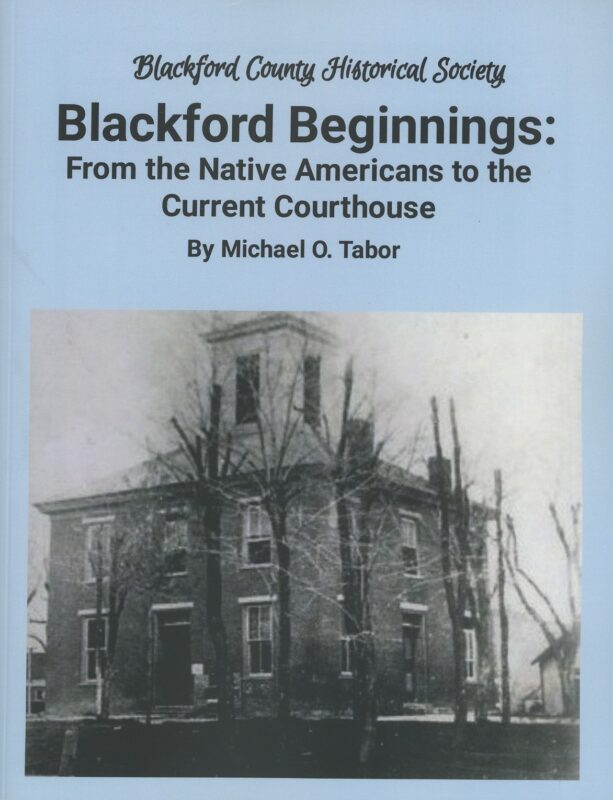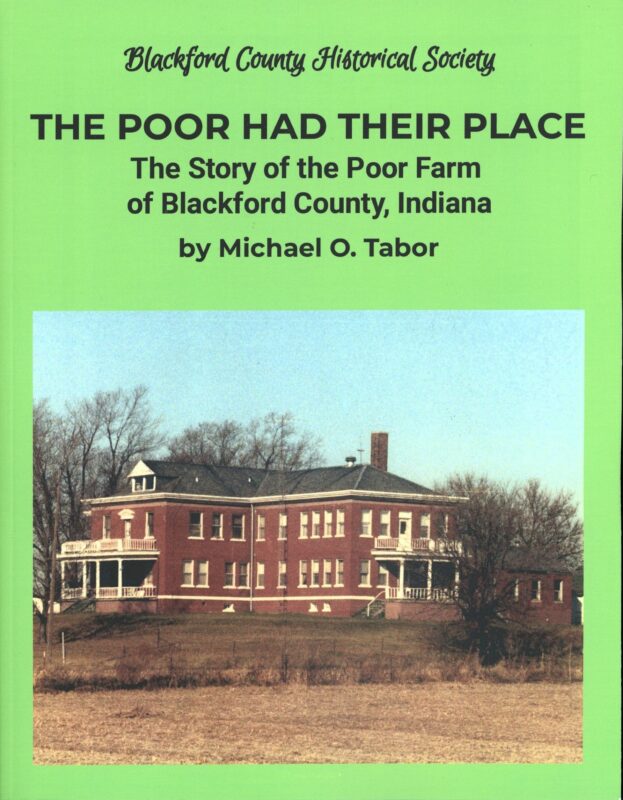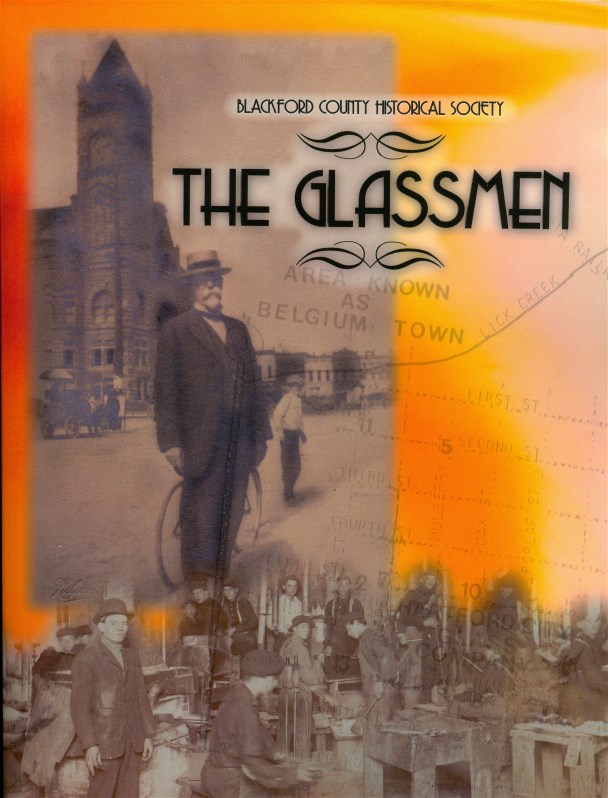Blackford Beginnings
This book explores the early phase of the history of Blackford County, Indiana, from the Native American presence through the "Gas Boom" and the construction of the current courthouse in 1894-95. It examines in depth the creation of Blackford County, the establishment and growth of Hartford city as the county seat, and the construction of the first courthouse and the resulting creation of a public square which became the commercial and business center of the community.
Its appendix contains the memories of some of its pioneer settlers, the 1838 act which created Blackford County, a list of county officials from 1839 to 1894, etc.
The Poor Had Their Place: The Story of the Poor Farm of Blackford County, Indiana
The local poor farm in Blackford County was known by a number of names including the County . . . Poor House Farm, Farm, Infirmary, Poor Asylum, and (after 1962) “Green Acres.” This volume looks at this county institution from its beginnings in 1865 until its closure in 1989.
After the first two chapters of background, other chapters examine the twenty-two persons who served as superintendent of the county farm. Along the way, human interest stories are included together with changes in the system initiated by the State of Indiana which eventually transitioned “inmates” to “residents.” Various building projects including the building in 1916 of a new infirmary structure are explained in detail. A number of scandals which shocked the county are examined.
Several appendices include those inmates who died and infants who were born at the infirmary, those admitted suffering from mental illnesses, an annotated and revised listing of those buried at the infirmary made by Cecil Beeson, and more.
More info →“Deceased” : Mortality in Early Hartford City, Indiana
This volume examines the issue of death in early Hartford City, Indiana. It looks at the early development of the town through the era of the "Gas Boom", the causes of death in teh local community, the early undertakers, tombstones and cemeteries. It also examines the two earliest cemeteries in what is now Hartford City: the old North Cemetery where Hoover Park is now located, and the old Predestinarian Baptist Church Grave Yard at the northeast corner of Mill and Water Streets.
The appendix contains a tribute to Cecil Beeson and Max & Judy Wiesenauer as preservers and records of local cemeteries, a listing of those reinterred at the Odd Fellows Cemetery from 1895 to 1910, and an inventories of the old North Cemetery and the old Baptist Grave Yard.
More info →The Glassmen
The discovery of gas and oil, which produced inexpensive fuel, lured great glass and paper making factories to East Central Indiana. Although the American Window Glass Company was by far the largest plant, there were several other glass factories located in Blackford County.
Belgian and French people, excellent glass workers for many generations, were drawn to the New World by the chance to follow their own trade and the promise of good wages. These people lived mostly on the South Side of Hartford City near the American Window Glass Company factory, though not exclusively, and not all were glassworkers. There were other ethnic groups living in the area including Germans, Italians, Irish, Spanish etc.
More info →




